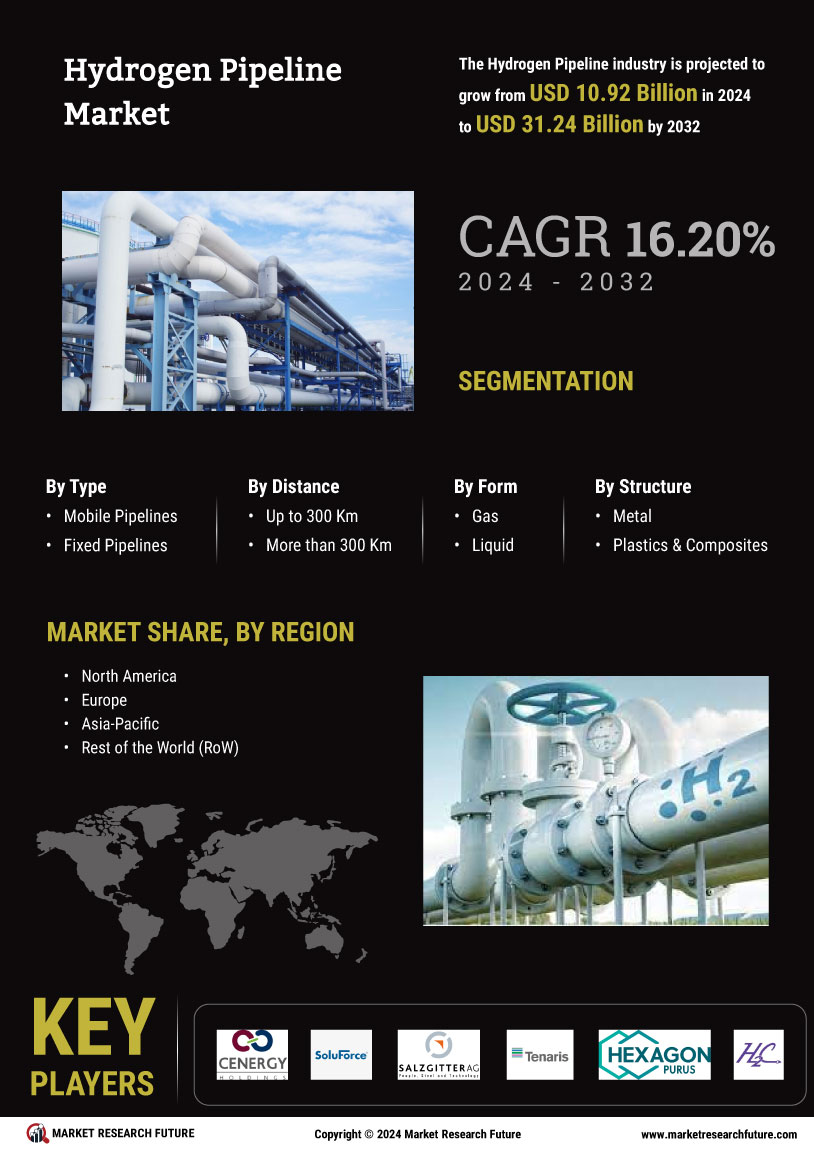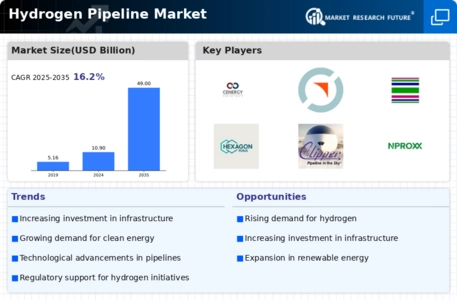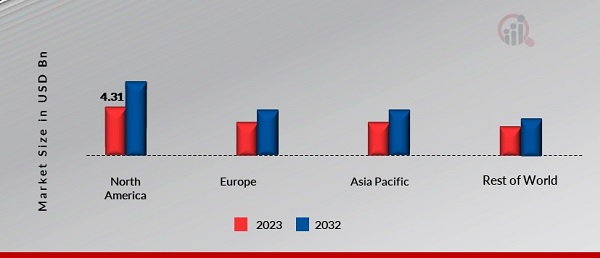Emerging Hydrogen Economy
The emergence of a hydrogen economy is reshaping the Global Hydrogen Pipeline Market Industry. As countries invest in hydrogen production, storage, and distribution, a comprehensive ecosystem is developing that supports hydrogen utilization across various sectors. This includes transportation, power generation, and industrial processes. The establishment of hydrogen hubs, where production and consumption converge, is becoming increasingly common. These hubs facilitate the efficient distribution of hydrogen, thereby enhancing market dynamics. The anticipated growth trajectory, with a CAGR of 14.63% from 2025 to 2035, reflects the potential of this evolving hydrogen economy.
Market Growth Projections
The Global Hydrogen Pipeline Market Industry is projected to experience substantial growth in the coming years. With an estimated market value of 10.9 USD Billion in 2024, the industry is expected to expand significantly, reaching approximately 49.0 USD Billion by 2035. This growth is underpinned by various factors, including rising demand for clean energy, technological advancements, and increased government support. The anticipated compound annual growth rate of 14.63% from 2025 to 2035 indicates a robust market trajectory, reflecting the increasing importance of hydrogen as a key player in the global energy landscape.
Rising Demand for Clean Energy
The Global Hydrogen Pipeline Market Industry is experiencing a surge in demand for clean energy solutions as nations strive to meet climate targets. Governments worldwide are implementing policies to reduce carbon emissions, which has led to increased investments in hydrogen infrastructure. For instance, the European Union aims to produce 10 million tons of renewable hydrogen by 2030, significantly boosting the hydrogen pipeline sector. This growing emphasis on sustainability is expected to drive the market's value to 10.9 USD Billion in 2024, with projections indicating a remarkable growth trajectory towards 49.0 USD Billion by 2035.
Government Initiatives and Funding
Government initiatives and funding play a crucial role in the expansion of the Global Hydrogen Pipeline Market Industry. Numerous countries are allocating substantial budgets to support hydrogen projects, recognizing the potential of hydrogen as a clean energy carrier. For example, the United States has proposed significant investments in hydrogen infrastructure as part of its energy transition strategy. These initiatives not only provide financial backing but also create a favorable regulatory environment that encourages private sector participation. As a result, the market is poised for robust growth, with expectations of reaching 10.9 USD Billion in 2024.
Growing Industrial Applications of Hydrogen
The industrial sector's increasing reliance on hydrogen as a feedstock is a driving force for the Global Hydrogen Pipeline Market Industry. Industries such as refining, ammonia production, and steel manufacturing are increasingly adopting hydrogen to reduce their carbon footprints. For instance, hydrogen is being utilized in the production of green ammonia, which is essential for sustainable agriculture. This shift towards hydrogen in industrial applications is anticipated to propel the market's growth, with projections indicating a rise to 49.0 USD Billion by 2035. The diversification of hydrogen applications across sectors underscores its pivotal role in the global energy transition.
Technological Advancements in Hydrogen Transport
Technological innovations in hydrogen transport are pivotal for the Global Hydrogen Pipeline Market Industry. Advances in materials science, such as the development of high-strength steel and composite materials, enhance pipeline durability and safety. These innovations facilitate the efficient transport of hydrogen over long distances, which is crucial for meeting the demands of various industries. Moreover, the integration of smart monitoring systems allows for real-time assessments of pipeline integrity, thereby reducing operational risks. As these technologies mature, they are likely to contribute to a compound annual growth rate of 14.63% from 2025 to 2035.




















